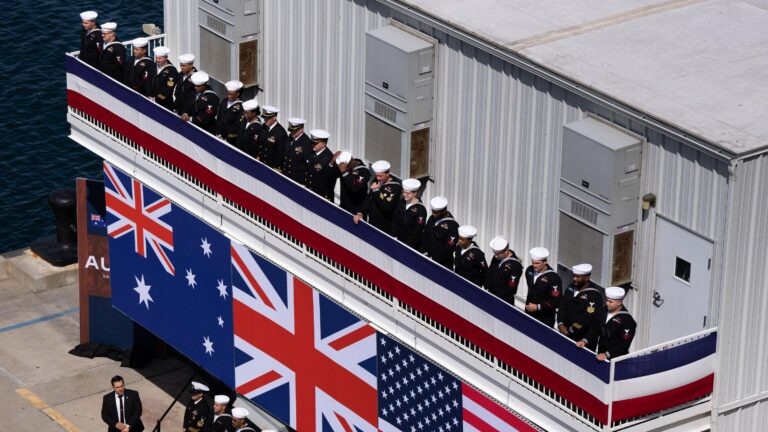Australia has expressed confidence that the United States will move forward with the highly anticipated AUKUS submarine deal following a comprehensive review. The trilateral security pact between Australia, the U.K., and the U.S. aims to bolster defense capabilities in the Indo-Pacific region through the transfer of nuclear-powered submarines. Amid ongoing deliberations in Washington, Australian officials remain optimistic that the agreement will proceed as planned, underscoring the strategic importance of the partnership in countering emerging regional threats.
Australia Expresses Optimism on U.S. Commitment to AUKUS Submarine Partnership
Australian officials have expressed renewed confidence in the United States’ dedication to finalizing the highly anticipated AUKUS submarine agreement. Following recent consultations and a thorough review, government representatives emphasize that the partnership remains a vital strategic priority for all parties involved. This trilateral pact aims to enhance Australia’s naval capabilities significantly by delivering cutting-edge nuclear-powered submarines, reinforcing regional security and technological collaboration.
The AUKUS deal symbolizes a historic shift in defense cooperation, promising benefits such as:
- Advanced military technology sharing, accelerating Australia’s maritime strength
- Strengthened alliances between Australia, the U.K., and the U.S.
- Enhanced deterrence amid increasing security challenges in the Indo-Pacific
- Long-term strategic stability for allied nations
| Milestone | Target Completion | Status |
|---|---|---|
| Review Completion | Mid-2024 | On Track |
| Design Finalization | Late 2024 | In Progress |
| Construction Start | 2025 | Planned |
Analysts Break Down Potential Outcomes of the AUKUS Review Process
Analysts examining the ongoing AUKUS review underscore a range of strategic scenarios that could arise from the U.S. decision-making process. While Australia remains optimistic about the continuation of the submarine deal, experts suggest that nuances in geopolitical dynamics might influence the timeline and operational scope. Key factors include technological transfer agreements, potential shifts in regional alliances, and the evolving defense priorities of all parties involved. These elements collectively shape the landscape of what analysts describe as a “complex but manageable negotiation phase.”
The possible outcomes, as outlined by defense strategists, hinge on several pivotal considerations:
- Acceleration of delivery schedules, aiming to reinforce deterrence capabilities in the Indo-Pacific region.
- Enhanced collaboration on emerging technologies, including nuclear propulsion and cybersecurity systems.
- Modification of strategic objectives based on U.S. domestic policy shifts and Congressional oversight.
- Contingency planning should diplomatic tensions affect the trilateral partnership’s cohesion.
| Potential Outcome | Impact Level | Estimated Timeline |
|---|---|---|
| Fast-tracked submarine production | High | 2-3 years |
| Expanded tech-sharing protocols | Medium | 1-2 years |
| Review postponement due to political shifts | Low | 6-12 months |
| Modifications to alliance commitments | Medium | Ongoing |
Experts Recommend Strategic Engagement to Secure Continued U.S. Support in Defense Collaboration
Leading defense analysts emphasize the importance of sustained strategic dialogue between Australia and the U.S. to ensure the momentum of the AUKUS submarine agreement. They warn that without proactive engagement, critical opportunities to reinforce mutual security interests could be jeopardized amid shifting global geopolitical dynamics. Experts advocate for regular high-level consultations and transparent communication channels as key tools to preserve trust and align defense priorities moving forward.
In addition to diplomatic initiatives, specialists highlight several pivotal areas where focused collaboration can strengthen the alliance:
- Joint technological innovation in naval propulsion systems
- Enhanced intelligence-sharing frameworks
- Coordinated training programs for submarine crews
- Clear timelines and benchmarks for project milestones
| Focus Area | Recommended Action | Expected Outcome |
|---|---|---|
| Technological Innovation | Joint R&D funding and resource sharing | Accelerated submarine development |
| Intelligence Sharing | Establish secure bilateral communication lines | Improved threat detection and response |
| Training Programs | Cross-training and simulation exercises | Enhanced operational readiness |
| Project Benchmarks | Define milestones with accountability measures | Transparent progress tracking |
Key Takeaways
As the review of the AUKUS submarine deal continues, Australia remains optimistic that the partnership with the United States will move forward as planned. Both nations have emphasized the strategic importance of the agreement amid evolving security challenges in the Indo-Pacific region. Observers will be closely monitoring developments in the coming weeks to gauge the future trajectory of this key defense collaboration.




